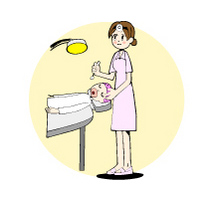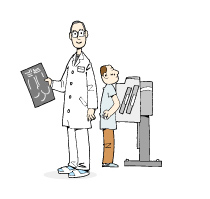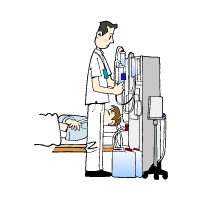毎年低下する日本の食料自給率【社会】

【政府の食料自給率の目標は45%】
食料自給率とは、国内で消費する食料をその国の食料生産でどの程度まかなわれているかを示す指標です。日本の食料自給率は、日本人の食生活が変化したことなどから毎年低下し、2015年は39%(カロリーベース)にまで落ち込んでいます。この数値は他の先進諸国と比べると非常に低く、政府は2025年を目標に45%への回復を目指しています。
Japan's food self-sufficiency rate has declined continuously
【The government set its food self-sufficiency target at 45 percent】
The food self-sufficiency rate is an indicator that shows how much daily food per capita is produced within a country. Japan's food self-sufficiency rate on a calorie basis has declined to 39 percent in 2015. It declines every year due to a change in eating habits of Japanese. Japan's food self-sufficiency rate is extremely low compared with other developed countries. The government's target is to raise self-sufficiency rate to 45 percent by fiscal 2015.
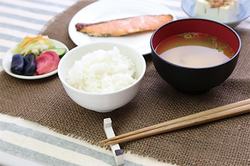 - 食料自給率とはどんな指標? -
- 食料自給率とはどんな指標? -食料自給率とは、国内の食料消費が国産の食料でどの程度賄われているかを示す指標です。この指標には、特定の品目ごとに重量で計算する品目別自給率と、食料全体について共通の「物差し」で単位を揃えて計算する総合食料自給率があります。このうち、総合食料自給率は、熱量に換算して計算するカロリーベースと金額に換算する生産額ベースの2種類があります。
品目別自給率は、国内生産量/国内消費仕向け量で求めることが出来ます。この計算式を2015年度の小麦を例に当てはめてみましょう。2015年度の小麦の国内生産量(100.4万トン)/小麦の国内消費仕向け量(658.1万トン)となり、小麦の2015年度の品目別自給率は約15%となります。
カロリーベースや生産額ベースは、重量を供給熱量や金額に換算して行います。2015年度の総合食料自給率のカロリーベースは、1人1日当たりの国産供給熱量(954kcal)/1人1日当たり供給熱量(2,417kcal)で、カロリーベースは約39%となります。同様に、生産額ベースは食料の国内生産額(10.5兆円)/食料の国内消費仕向け額(16.0兆円)ですので約66%となります。
- What is food self-sufficiency rate? -
Food self-sufficiency rate is an indicator that shows how much daily food per capita is produced within a country. This indicator has food self-sufficiency rate on an item-specific weight basis and total food self-sufficiency rate. There are two types of total food self-sufficiency rate: calorie value basis and production value basis.
The food self-sufficiency rate on an item-specific weight basis is calculated by dividing domestic production amount by domestic consumption amount. We will use this calculation formula to fiscal 2015 wheat as an example. The self-sufficiency rate of wheat in 2015 was 15 percent, calculated by dividing Japan's wheat domestic production amount (1,040,000 tons) by wheat domestic consumption amount (6,581,000 tons).
The calorie value basis evaluates consumption and production of agricultural commodities by their calorie values, while the production value basis evaluates consumption and production of agricultural commodities by their market prices. The food self-sufficiency rate on calorie value basis in fiscal 2015 was 39 percent, calculated by dividing a domestic calorie supply basis per person per day (954kcal) by a calorie supply basis per person per day (2,417kcal). The production value basis was 66 percent, calculated by dividing domestic production of food (10.5 trillion yen) by domestic consumption of food (16.0 trillion yen).
- 日本は先進国で最低の水準 -
日本の食料自給率は、カロリーベースでも生産額ベースでも長期にわたって低下傾向を示しています。通常、食料自給率でよく使用されるカロリーベースでは、1965年度の73%から大きく低下し、2015年度は39%にまで落ち込んでいます。また、生産額ベースでも低下傾向で推移し、過去最低の2014年度より2%増の66%になりましたが、依然として低水準となっています。
他の先進国と比べると、カナダ258%、オーストラリア205%、フランス129%、アメリカ127%、ドイツ92%、イギリス72%、イタリア61%などとなっており、日本の食料自給率は先進国の中で最低水準です。ただし、カロリーベースでは、食料をすべてカロリーに換算して計算するため、野菜などの低カロリー食物は食料自給率にあまり貢献していません。また、畜産物については、国産であっても輸入飼料で育てられた分は国産に算入されていません。
このため政府は2000年以降、5年ごとに食料・農業・農村基本計画を作り、食料自給率をカロリーベースで50%を目標に様々な政策を打ち出してきました。しかし、1965年に73%あった食料自給率は一貫して下がり続け、2010年以降は39%と低迷し続けています。こうした事態を受け、2015年の新たな基本計画では、2025年度の食料自給率の目標値をカロリーベースで45%に引き下げることを余儀なくされました。生産額ベースでは73%を目指しています。
- Japan's food self-sufficiency rate is the lowest level among developed countries -
Japan’s food self -sufficiency rate shows a downward trend over the long term both on a calorie basis and on a production basis. Japan's calorie-based food self-sufficiency rate was 73 percent in fiscal 1965, but in 2015, it dropped to 39 percent. Japan's food self-sufficiency rate was 66 percent on a production value basis, an increase of 2 percent compared with 2014.
Japan has the lowest level of food self-sufficiency rate, compared with, for example, 258 percent for Canada, 205 percent for Australia, 129 percent for France, 127 percent for the United States, 92 percent for Germany, 72 percent for Britain, and 61 percent for Italy. Low-calorie food such as vegetables counts for less in the food self-sufficiency rate on calorie value basis than it does in production value basis. Livestock raised in Japan would not be counted as domestic supply if their feed is imported.
In 2000, the government set a target of raising food self-sufficiency rate to 50 percent on a calorie basis. The government's basic agriculture plan has been formulated every five years since then to set the direction of farming policy. Japan's food self-sufficiency rate on the calorie value basis was 73 percent in fiscal 1965, and then decreased to 39% in fiscal 2010. In response to this situation, in 2015, the government set a food self-sufficiency target of 45% on calorie value basis and 73% on production value basis by fiscal 2025.
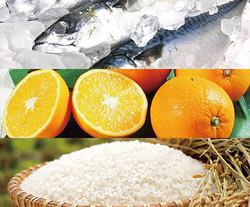 - なぜ食料自給率が上がらない -
- なぜ食料自給率が上がらない -日本人の食生活は、戦後大きく変化しました。食生活の多様化で、主食である米や魚、野菜などから畜産物や油脂、小麦、加工食品など自給率の低い食品の消費が増えて行きました。
このため、政府は主食用の米の生産を抑える一方、多くを輸入に依存する小麦や大豆などの国産化、また家畜用のエサ米や小麦代替の米粉などを作って自給率の向上を目指しました。しかし、水田では小麦や大豆などを栽培することは難しく、大規模な土壌改良が必要になります。しかし、この取り組みは巨額を必要とするために先送りされ、日本の土壌に適した新たな品種改良も進みませんでした。期待されたエサ米や米粉の普及も、コストの問題などで行き詰まっています。政府は他にも様々な政策を打ち出し、莫大な予算を投入して食料自給率の向上を目指しましたが、いずれも計画通りには進んでいないのが実情です。
農業従事者の高齢化も深刻です。2015年の農業従事者は、数こそ209万人と大勢いるものの、65歳以上の高齢者が133万人と63%以上を占めています。食料自給率の向上を目指すには、若者や企業の参入を促すとともに、品種改良や機械化を進めて生産力の向上を図ることが望まれます。
- Why doesn't food self-sufficiency rate rise? -
Eating habits of Japanese changed greatly after the war. Due to dietary diversification, food consumption such as livestock products, oils and fats, wheat, and processed food has increased.
The government aims to produce wheat and soybeans that depend heavily on import domestically, make rice for livestock, and make rice flour substitute for wheat. However, cultivation of wheat and soybeans in paddy fields is difficult and a large-scale soil amendment is necessary. It was postponed because huge amount of money was required, then development of new varieties suitable for Japanese soil did not advance. The spread of expected bait rice and rice flour is also stalling due to cost-related problems. Although the government also proposed various policies and introduced a huge budget to improve the food self-sufficiency rate, nothing has progressed as planned.
The agricultural workers face an advancing aging crisis. There were 2,090,000 agricultural workers in 2015, more than 63% of them were 65 years or older. In order to improve food self-sufficiency rate, young people and enterprises are needed.
- 食料自給率が低いとどうなる? -
世界の人口は、2000年は61億人でしたが、2050年には1.6倍の97億人まで増加する見通しです。食糧事情は、穀物は2005年~2007年の平均に比べて1.5倍、畜産物は1.7倍に増加すると予測されています。
世界の穀物生産量は、これまで需要量に対応して増加してきました。これは農地面積が拡大したのではなく、技術革新で単位面積当たりの収穫量が増えたためです。経済成長で国民所得が増えると、肉類の消費量が増えます。畜産物の消費量が増えると、穀物需要が増加します。農地面積の拡大が期待できない今日、世界的な食料危機はさらに深刻化していきます。
こうした中、不足する食料を輸入に頼ることは大きなリスクを伴います。世界的な気候変動などで、毎年安定した収穫が望めるとは限りません。輸出国での政情不安や紛争などで、輸出がストップするかも知れません。このように将来にわたって安定した輸入が望めるか不安ですし、輸入できたとしても価格は高騰するでしょう。
食料自給率39%の日本に住む私たちは、こうした事態を深刻に受け止め、食品ロスなど食料自給率の向上に取り組むことが急務となっています。
- What happens if food self-sufficiency rate is low? -
World population was about 6.1 billion in 2000, and is expected to reach 9.7 billion by 2050. It is estimated that demand for global agricultural production will increase by 1.5 times from its 2005–2007 levels and livestock products will increase by 1.7 times.
Grain production in the world has increased in response to a demand amount. It is not the area of agricultural land has expanded, but the yield per unit area has increased due to technological innovation. As national income increases due to economic growth, meat consumption increases. Livestock production generates a larger demand for feed grain. Today, we cannot expect the expansion in agricultural area. Global food crisis will worsen.
Under these circumstances, relying on imports of insufficient food entails great risk. Due to global climate change, it is not always possible to expect a stable harvest every year. Exports may stop due to political unrest and disputes in the exporting country. It is not certain whether stable import will secure, and even if we can import food, the price will soar.
We living in Japan with a food self-sufficiency rate of 39% have to work on improving the food self-sufficiency rate including food loss.





